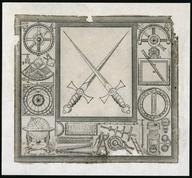

Battery of 18 Leyden jars, housed in a wooden box, about 1775, made and used by Henry Cavendish for electrical experiments in his private laboratory at Clapham Common, London.
Leyden jars, which enabled the storage and movement of static charge, transformed electrical experimentation during the 18th century. Prior to their invention, static electricity had to be generated as required for experiments, usually using a friction electrical machine.
Wealthy natural philosopher Henry Cavendish had wide-ranging scientific interests. Between 1767 and the early 1780s he conducted a variety of electrical investigations in his private laboratory at Great Marlborough Street, London. Several of these involved ‘batteries’ of multiple Leyden jars, like this one. In one series of experiments, Cavendish attempted to mimic the shocks of the electric torpedo fish.
Details
- Category:
- Electricity and Magnetism
- Object Number:
- 1930-901
- Measurements:
-
overall: 510 mm x 715 mm x 360 mm, 29 kg
- type:
- leyden jars, primary batteries and storage cells
- credit:
- Cavendish, Victor Christian William, ninth duke of Devonshire




